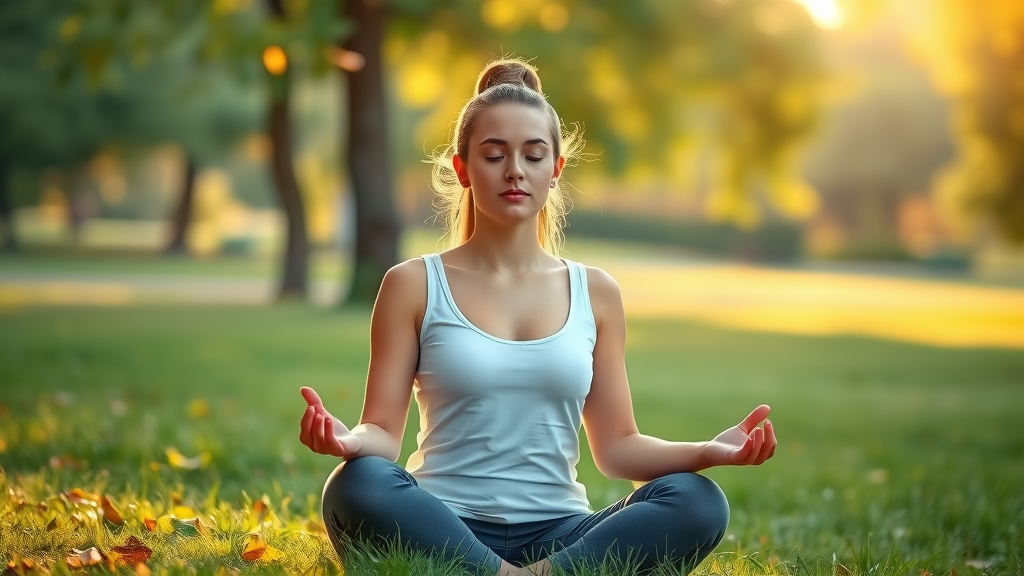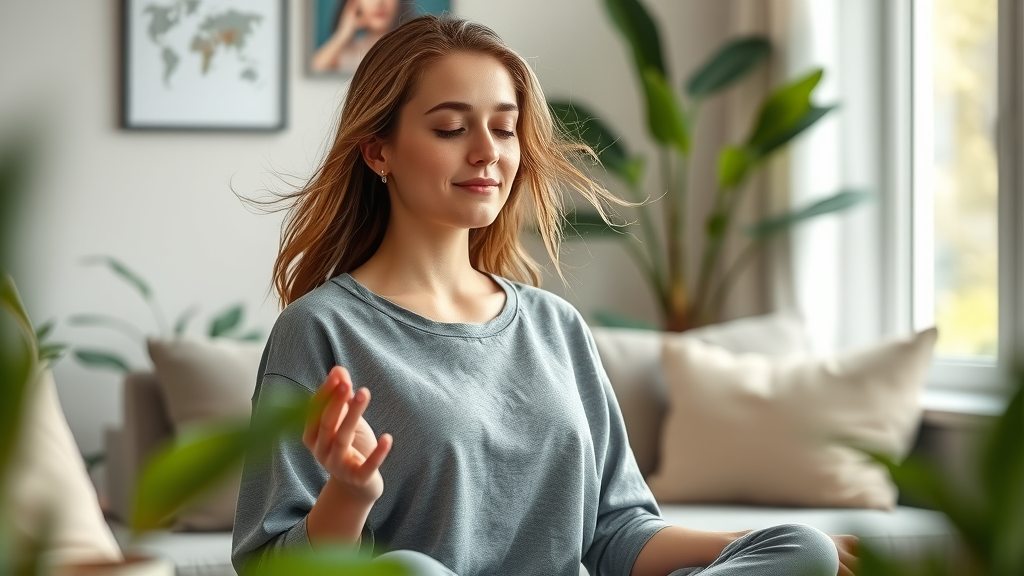
Did you know that women who regularly take breaks from social media report up to 40% higher satisfaction with their daily lives? This eye-opening statistic is more than just a call to unplug—it's a wake-up call for your wellness. Social media platforms are woven into modern life, yet they often quietly drain our peace and contentment. If you’ve found yourself craving deeper joy or real-life connection, understanding the effect of social media on your happiness is the first—and most vital—step.
Women, Wellness, and the Case to Take Breaks from Social Media
For women seeking a true sense of wellness and joy, learning how to take breaks from social media for contentment can be transformative. With curated feeds and constant notifications, platforms like Instagram, Facebook, and TikTok can create a cycle of comparison, overstimulation, and emotional fatigue. The good news? Intentional media breaks don't just help with relaxation—they empower you to regain control, clarity, and even happiness in your everyday routine.
Addressing your social media usage is not about withdrawal; it is an affirmation of self-care. Numerous women find that taking a break, even for a few hours a day, boosts self-esteem, improves sleep quality, and reinvigorates real-life relationships. Whether you’re a working professional, a busy mom, or a student, adopting practical social media break strategies can protect your mental health and help you uncover lasting joy.
A Startling Truth: The Impact of Social Media on Women's Joy
"Women who regularly take breaks from social media report up to 40% higher satisfaction with their daily lives." – Dr. Emily Reed, Wellness Expert
This striking insight from Dr. Reed underscores the critical link between media usage patterns and women’s wellness. Taking a media break isn’t merely a trend—it’s a science-backed method for restoring joy, purpose, and resiliency in the face of digital overload. Studies reveal that limiting social media time leads to fewer anxious thoughts, deeper sleep, and a heightened sense of gratitude. For many, the most noticeable impact comes from carving out dedicated time to be truly present, whether it's spending time with friends and family or enjoying solitary reflection.
If you find yourself caught in the loop of scrolling, comparing, or struggling with negative feelings, it’s time to explore intentional, restorative actions. The right approach to a social media break can be your gateway to happiness—no extreme digital detoxing required, just meaningful balance that puts your needs first.
What You'll Learn About Taking Breaks from Social Media for Contentment
- The science behind contentment and the effect of social media usage
- Proven strategies for digital detox and social media break success
- Practical steps to implement a media break in your daily life
- Key wellness benefits for women achieved through taking a break
Understanding Why Women Need to Take Breaks from Social Media for Contentment
Mental Health: How Social Media Impacts Women's Emotional Wellbeing

Social media platforms were designed to connect people, yet their real-life impact on women’s mental health can be intense. Continuous exposure to idealized images and constant notifications fuels comparison, anxiety, and sometimes depression. Research has linked excessive screen time and high social media usage to negative effects on sleep quality, focus, and emotional stability. Women, in particular, may experience greater sensitivity to the pressures of online engagement, triggering cycles of stress or inadequacy.
A break from social media acts as a reset for your mind and mood. Stepping away even for a short period provides relief from external validation, lessens the pressure to keep up with endless updates, and encourages genuine self-reflection. Many women report improved energy, sharpened attention, and a new appreciation for offline activities—such as journaling, nature walks, or connecting face-to-face with friends and family. In summary, prioritizing mental health means being mindful of how, when, and why you engage on any media platform.
The Social Media and Contentment Connection
The relationship between digital habits and happiness is complex but critical. Studies consistently find that limiting social media time allows for greater contentment, better emotional regulation, and fewer negative feelings. A recent survey compared women who took a scheduled break from social versus a control group who maintained usual media usage. The results were striking: those who paused engagement on their favorite platforms reported measurable increases in joy, satisfaction with real life, and feelings of fulfillment. By recognizing that not all screen time is beneficial, you create space for more meaningful, nourishing experiences.
Learning to identify social media fatigue—such as irritability after scrolling, distraction during conversations, or trouble sleeping—helps you know when it's time for a reset. The journey to contentment isn’t about entirely cutting out technology but implementing a balanced digital detox that enriches your overall quality of life.
| Feeling | Before Detox | After Detox |
|---|---|---|
| Stress Level | High | Low |
| Focus & Productivity | Poor | Improved |
| Sleep Quality | Interrupted | Restful |
| Contentment & Happiness | Low | High |
The Science Behind Taking Breaks from Social Media for Contentment
What Happens to Your Brain During a Social Media Detox?
When you take breaks from social media for contentment, your brain finally gets a chance to reset. Constant exposure to digital platforms triggers the brain's reward pathways, making it crave likes, comments, and validation. This loop, known as the dopamine feedback cycle, can lead to compulsive checking and heightened anxiety. Studies reveal that a social media detox lowers addictive patterns, reduces distractions, and rebuilds your brain’s natural reward systems.
Crucially, women often report a sharper improvement in mood and stress management after detoxing from social media. Without constant comparisons, the brain re-engages with authenticity, producing balanced emotions and a greater sense of life satisfaction. Whether it’s a weekend digital detox or setting strict daily limits, these breaks give your mind time for deeper thinking and real-life engagement—both powerful tools for lasting contentment.
Digital Detox: Understanding Media Usage and Emotional Outcomes

A digital detox means intentionally removing or reducing your use of social media platforms and devices. For women, taking this step can lead to transformative changes: fewer negative thoughts, better sleep quality, and a refreshed sense of purpose. The process involves more than just limiting screen time; it’s about understanding your media usage patterns and how they affect emotions. Many women find that after a detox, their relationships, focus, and enthusiasm for daily tasks dramatically improve. Emotional outcomes include reduced anxiety, higher emotional intelligence, and greater joy—especially when media time is replaced with offline activities like hobbies, nature walks, or creative pursuits.
The path to contentment doesn’t demand a harsh unplug, but rather thoughtful tweaks to your daily routine. Whether it’s setting a scheduled media break each evening or choosing “no phone” Sundays, these bite-sized changes deliver big benefits. Commit to a media detox and watch how quickly small steps can accumulate into genuine, sustainable happiness.
Research Roundup: Media Breaks, Social Media Time, and Women’s Happiness
The science is clear—taking scheduled breaks from social media time delivers measurable upticks in women’s happiness. One recent study highlighted significant increases in daily contentment and better mental health among women who reduced their media time by just 30 minutes a day. Other research notes that even a temporary social media break (such as a weekend off or pre-scheduled evening breaks) reduced feelings of overwhelm and gave participants more energy to spend on meaningful pursuits.
Interestingly, women reported the greatest improvement in joy and self-worth when their media break included positive offline activities and real-life social connections. Key to these benefits is consistency—making a media break part of your routine rather than a one-off event. Whether you choose a full-scale digital detox or just a focused period away from your favorite media platforms, the research supports one conclusion: contentment is within your grasp when you make room for it.
Recognizing the Signs: When It’s Time for a Social Media Break
Telltale Symptoms of Social Media Fatigue
Social media fatigue sneaks in quietly but can have a significant impact on your wellbeing. Common symptoms include feeling drained after scrolling, anxiety about missing updates (the dreaded “fear of missing out”), increased irritability, or noticing that you measure your self-worth by online feedback. Frequent headaches, disrupted sleep, and falling behind on real-life responsibilities are also major red flags. For women, these signs may emerge more acutely due to the pressures and expectations often magnified online.
Paying attention to these symptoms is crucial for self-care. If you notice your mood shifts with the number of likes or you experience ongoing distractions in daily routine, it’s likely time to consider detoxing from social media. Remember, being aware and proactive puts you in the driver’s seat—every symptom is just a signal your mind and body are ready for positive change.
How to Assess Your Social Media Usage Patterns
Assessing your social media usage gives you clarity on when a media break will be most effective. Start by tracking daily media time using device analytics or wellness apps—this shows you your averages across different platforms. Next, evaluate when and why you reach for your phone: Is it boredom, loneliness, or habit? Reflect on your feelings after each session; if you notice ongoing negative feelings or mental clutter, these are strong cues for a break.
- Comparing daily media time to recommended limits
- Emotional checklists for women
- Sleeping and focus changes
Finally, compare your screen time to expert-recommended guidelines (typically 1–2 hours/day for personal social use). If you’re exceeding this, think about what real-life activities you’re sacrificing—and use that knowledge to plan your media detox.
Step-by-Step Guide: How Women Can Take Breaks from Social Media for Contentment
Setting Reasonable Time Limits for Media Usage

Setting a time limit for your media usage is a powerful act of self-advocacy. Start by choosing a specific time each day to unplug, such as during meals or right before bed. Many devices offer built-in parental controls or app timers—these tools allow you to cap your social media time for the day. If you struggle with willpower, consider accountability tools or enlisting a friend to check in on your progress. Small shifts, such as replacing morning scrolling with a mindful meditation, can make a big difference. Remember, the goal isn’t total deprivation but rather conscious, restorative media usage that aligns with your wellness priorities.
Some successful approaches include scheduling designated media breaks, instituting weekly “tech-free” evenings, or even moving social apps to a separate device. The key is consistency—regular breaks rewire your habits, reduce stress, and enable you to reconnect with authentic sources of joy.
Planning a Successful Social Media Detox
Embarking on a social media detox can feel daunting at first, but planning paves the path to success. Start with a clear intention: What do you hope to gain? (More focus, better sleep, closer relationships?) Then, choose your break length—try a weekend offline or opt for one week without personal platforms. Communicate your plan to your friends and family in advance, so they can provide encouragement and understanding.
Make a list of alternative offline activities you enjoy or have wanted to try, such as painting, journaling, taking nature walks, or volunteering. Prepare your environment—silence notifications, uninstall apps temporarily, and set visual reminders (like a sticky note on your mirror). Review your progress regularly and celebrate every small victory. Remember, detoxing from social media is not about punishment; it’s about rediscovering pleasure, peace, and purpose in your everyday routine.
Offline Activities for Women to Replace Social Media Time

Replacing digital time with offline activities is one of the most rewarding aspects of a media detox. Try activities that engage your senses and support wellbeing—like painting, gardening, baking, or yoga. Reconnect with your creative side, pick up a new hobby, or commit to spending time with friends and family in person. Prioritizing enriching activities not only fills the void left by less screen time but also builds confidence and satisfaction in real life.
Other popular options among women include joining book clubs, attending community fitness classes, or simply enjoying a walk outdoors. The variety is endless, but what matters most is choosing activities that nourish your spirit and reflect your values. Use this opportunity to develop interests that might’ve been buried under busy digital routines.
Building a Supportive Environment During Your Media Break
- Enlist friends and family
- Use accountability apps
- Join women-focused wellness groups
Support makes all the difference when taking a break from social media for contentment. Whether it’s organizing device-free gatherings, checking in with a trusted friend, or joining dedicated wellness communities, external encouragement can help you stay accountable. Many women find motivation and understanding in groups focused on mindful living, wellness, or even specific hobby groups. Don’t hesitate to share your journey—your courage may inspire someone else to embark on their own path to contentment.
Balancing Social Media: Integrating Moderate Use for Lifelong Contentment
Creating Sustainable Digital Habits

True contentment isn’t about completely abandoning technology—it’s about cultivating sustainable digital habits that serve your mental health. Establish healthy routines, such as pre-set blocks for checking messages, and honor “no phone” zones in your home or work area. Set boundaries by muting or unfollowing sources that spike anxiety or drain energy. When you shape your environment and schedule proactively, you put yourself in charge of media usage, rather than letting platforms dictate your mood or time.
Give yourself grace as you adjust screen time and redefine your relationship with digital platforms. The most fulfilling balance often comes from combining intentional periods online with immersive, real-life connections. Small, steady habits quickly add up to a healthier, more joyful lifestyle.
How to Reintroduce Social Media Mindfully After a Media Detox
After a successful media detox, thoughtfully reintroducing social media is crucial. Start by prioritizing quality over quantity: decide which platforms actually add value to your life, and set a clear time limit for their use. Resist the urge to check your phone immediately upon waking or before bed. Instead, carve out intentional spaces in your day for digital engagement—and stop once your set period ends.
Evaluate your emotional reactions: If a particular media platform reignites anxiety or comparison, it may be time to hit pause or unfollow toxic accounts. Ongoing self-assessment ensures your return to digital life supports your wellness, not disturbs it. Many women find that a mindful approach—checking in with emotions, setting boundaries, and recalibrating as needed—delivers lasting contentment even after returning online.
Using Social Media for Positive Connection Only
Social media can be a tool for empowerment and community, but only when used with intent. Shift your focus from endless scrolling to positive interactions: follow uplifting pages, join interest-based groups like women’s wellness or mindfulness, and use direct messaging to deepen real friendships. Consciously replace comparison with inspiration, and curate your feeds for encouragement, joy, and new opportunities.
Finally, remember that controlling your feed means controlling your joy. Choose to engage online in ways that reflect your healthiest, most confident self, and don’t hesitate to step back again if needed. Lifelong contentment comes from digital practices rooted in self-awareness, gratitude, and meaningful connection.
People Also Ask About Taking Breaks from Social Media for Contentment
Does taking a break from social media actually help?
Research has consistently shown that taking a break from social media can reduce stress, improve focus, and significantly increase feelings of happiness—especially for women prioritizing wellness.
How often should you take a break from social media?
Experts recommend scheduling regular media breaks, ranging from a daily hour of offline time to a weekend digital detox every month, to optimize mental clarity and contentment.
What happens to the brain when you take a break from social media?
Stepping away from social media can reset reward pathways, lower anxiety, and restore balance to attention and mood—benefits particularly prevalent among women.
How long does it take to detox from social media?
Most women start noticing wellness improvements within 3–7 days of a social media detox, though long-term contentment increases with extended or repeated breaks.
Lists: Quick Tips for Women to Take Breaks from Social Media for Contentment
- Schedule tech-free periods every day
- Identify your emotional triggers related to media usage
- Disable non-essential notifications
- Replace scrolling with mindful offline activities
- Reflect weekly on your emotional wellness
FAQs—Women, Wellness, and Taking Breaks from Social Media for Contentment
Can a social media detox help with mental health and focus?
Yes. Research and practical evidence show that a social media detox enhances mental health, boosts focus, and stabilizes mood. By lowering anxiety, counteracting negative feelings, and supporting healthy dopamine levels in the brain, regular media breaks make room for authenticity and sustained attention—two essentials for lasting contentment and productivity.
What are the first steps to starting a media detox?
Begin by recognizing your motivation for detoxing from social media—do you need more real-life connection, less stress, or better sleep? Set a start date, inform your loved ones, and create a plan of enjoyable offline activities to fill the gap. Use settings and apps to limit platform time, and have a journal or checklist ready to track your progress. The secret is to start small and celebrate every improvement along the way.
How do I make offline activities more enjoyable than social media?
Choose offline activities that genuinely excite or relax you, like art, gardening, dance, or cooking. Invite friends and family to join you, or connect with local clubs for communal experiences. Infuse routine activities with mindfulness; savor moments fully and give yourself permission to explore new interests. The more pleasure and accomplishment you derive from real life, the less tempting mindless scrolling becomes.
Is taking a break from social media effective for busy women professionals?
Absolutely. Even the busiest women can benefit from scheduled media breaks. Dedicating just 15–60 minutes a day to disconnecting allows for sharper focus, better creative thinking, and improved emotional resilience. Many professional women report that intentional, pre-planned detoxes ultimately save time by reducing distractions and increasing productivity in their daily routine.
Key Takeaways on How to Take Breaks from Social Media for Contentment
- Scheduled media breaks can dramatically improve women's contentment
- Simple step-by-step actions are easy to integrate into a busy routine
- Regular digital detox and social media breaks boost both happiness and wellness
Final Thoughts: Taking Breaks from Social Media for Contentment as a Woman’s Wellness Essential
"You owe it to yourself to find contentment beyond the screen. Every break is a step closer to deep joy." – Sophia Martinez, Wellbeing Coach
 Add Row
Add Row  Add
Add 




Write A Comment